What Are Avioms?

If you’re just getting started with loops, you need to know that an in-ear system make the process much easier and if you operate in the music space at all, you have probably heard of Aviom. What you may not know however, is what Avioms are, how they work, why they’re better than wedges, and how they’re not as expensive as you might think! Let’s take a walk through an Aviom system and understand what each element is and what it does.
The Control Unit / Personal Mixer
This is the A16-ii – Aviom’s standard per-musician personal mixer. In an Aviom environment, each musician (and vocalist) gets one of these units. Each unit has receives up to 16 channels of audio and is used to make a unique, custom mix for your ears only. What you do on this unit does not affect the other units in any way. For each of the 16 audio channels, you have volume and left-right pan control. You also have master bass, treble, and volume knobs. These units take an ethernet input (from the A-Net system which we’ll talk about later) and have a 1/4 inch headphone jack output.
You, as the musician, can turn up the instruments you need and turn down everything you don’t care about. As a vocalist you can choose to hear the other singers, the piano, and the acoustic guitar while leaving out the electric guitars, bass, and loop tracks. As a drummer, you may only care to hear the worship leader and not the background vocals. Aviom systems make this possible since each unit has independent volume control of each audio channel.
In addition to the mixing capabilities of the unit, you also have some more utilitarian functions like solo and mute for each channel as well as the ability to save your current mix to a preset and recall it at any time (either later in the set, next week, in a year, etc) and the ability to reset all levels to zero.
The A-Net Distributor
Audio is distributed to the per-musician personal mixers from an A-Net distributor. These are commonly available in 2 flavors:
The A-16D:
The A-16D Pro
Both of these units have an A-Net input (which comes from the input device – that’s the next part) and 8 outputs, each of which hook up to the personal mixers. There is one major difference between these two units: the outputs of the A-16D Pro also provide power for the personal mixers so you don’t need to use wall-warts to power thepersonal mixers. It helps keep your stage clean and saves you on power cables and extension cords. The other minor difference is that the A-16D Pro can be daisy-chained to additional units if you need more ports. It’s worth noting however, that you can daisy-chain up to 3 mixers off each other but will need to use the wall-wart either way.
The Input Module
So now we know how the musician on stage can make their own monitor mix, we also know how that A-Net signal gets distributed to the mixers; what we don’t know, is how the audio gets into the A-Net system. This is accomplished through the use of one of Aviom’s input modules. Input modules are available for just about every situation. Here is a couple of commonly used input modules:
The 16x line level analog input module has 16 line-level 1/4 inch inputs on the back. If your sound console has direct outputs, this is likely the input module right for you.
The 16x mic level analog input module has 16 microphone inputs on it as well as 16 mic outputs. This allows you to take your instruments and vocals directly to the Aviom system and then to your sound console. If your mixer doesn’t have direct outputs, this is probably the easiest way to get started.
Aviom also makes a digital card for use in Yamaha LS9’s, M7’s, and most of their larger consoles as well. This card uses an available slot on the mixer and can send any combination of sources from the desk.
Hooking It All Up
Regardless of the input module you use, all you need is a single Ethernet cable (Cat 5 or higher) connecting the input module to the A-Net distributor. From the A-Net distributor to the personal mixers is another Ethernet cable, and the you can plug headphones (either traditional or in-ear) straight into your personal mixer.
But Why
No more stage wedges, no more stage volume arguments, and no more asking the guy at the sound mixer for more of yourself! Having individual control over your own mix lets you decide what’s important to you and that is what you hear.
The price isn’t as bad as you might expect. 5 Personal Mixers and a distributor will run you ~$3,800 from Sweetwater plus the cost of the input module for your sound console. When you compare that against the cost of 5 wedges, amps, and all the cabling, it’s not unreasonable and the flexibility is much, much greater.
Questions?
If you’re confused, don’t be shy! Avioms can be complicated and confusing, ask your questions in the comments and we’ll help you get sorted out. If you’re already using them, I would love to hear what problems they resolved, both on your stage and at your church!
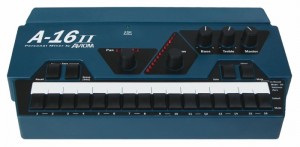


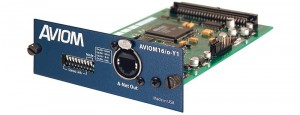
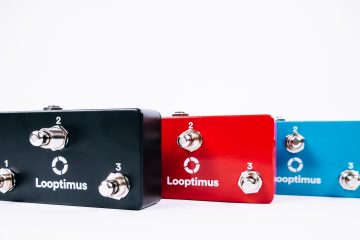
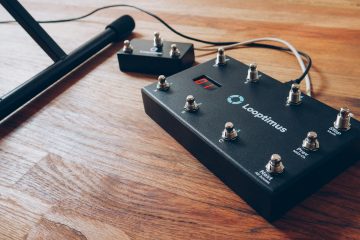
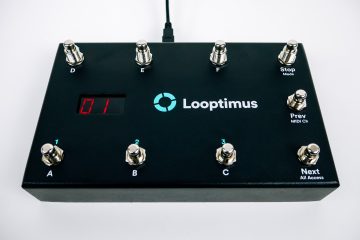
2 Comments
Elgin · January 5, 2012 at 2:39 pm
Has anyone checked out Behringer’s solution to Avioms? http://www.sweetwater.com/store/detail/P16M/
I’m curious if they hold up. We are wanting to move toward in-ear monitors, and at the price point, these sure are tempting.
Josh Wagner · January 14, 2012 at 1:15 pm
I can say, after using Avioms, I’m bummed when I don’t get to use them. The personal mixes are such a great deal. I can make sure I can hear myself and tweak the mix (something I do often…) as much as I need.
Our church upgraded to Roland’s personal mixers (http://www.sweetwater.com/store/detail/M48Package) and those are even more incredible. The sound quality is so much better with those, but the price isn’t as nice as the Avioms. If you can swing either, go for it, the musicians will love you.